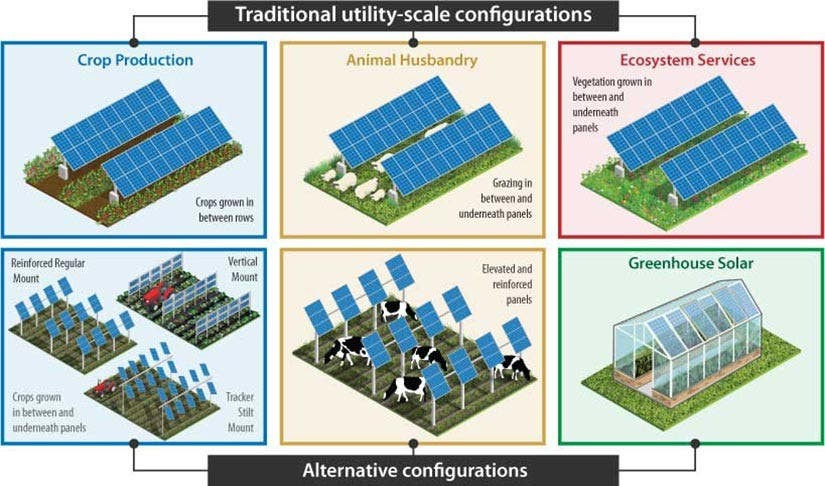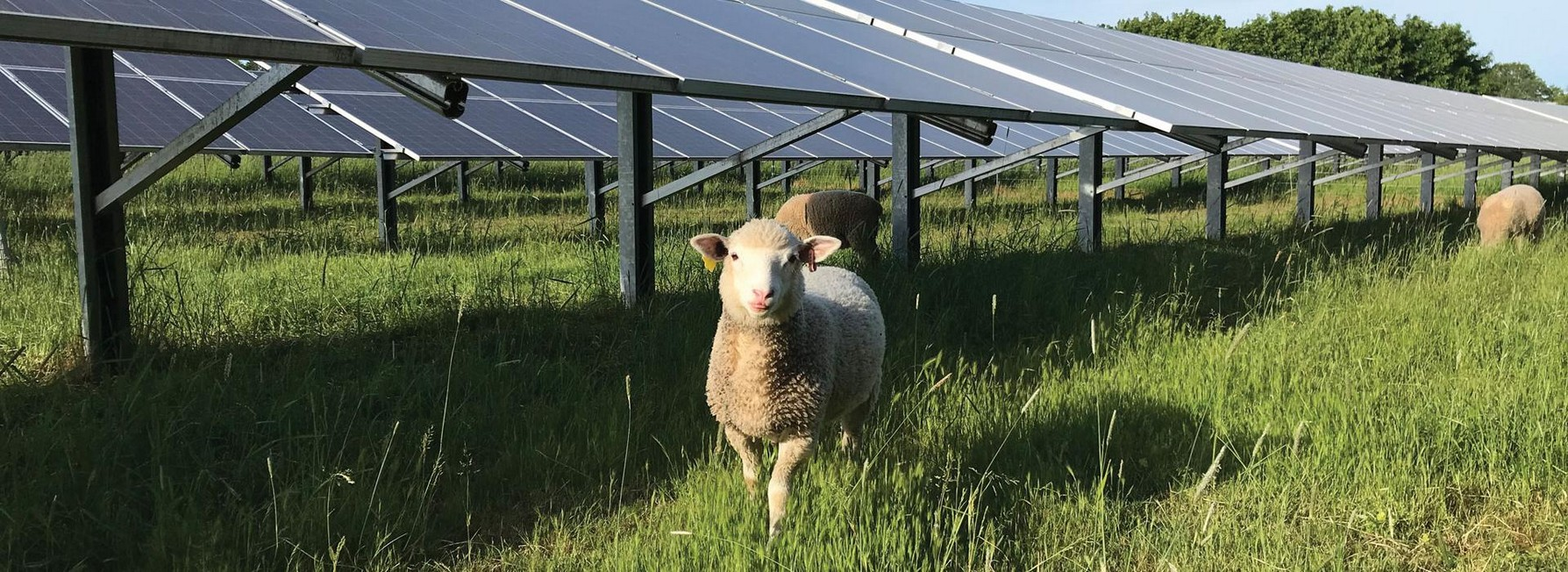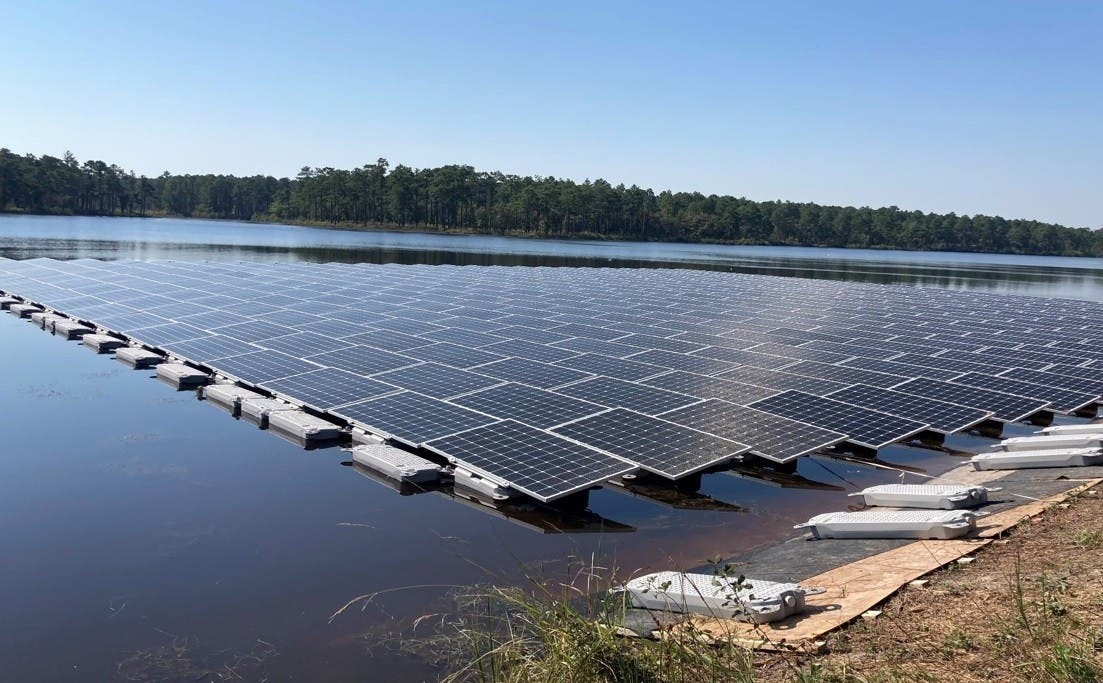Perspective: The Nations Clean Power Goals Will Require Changes In Our Views
Let’s talk about footprints. Not human. Not animal. But the footprint and locations required for renewable energy to replace that of fossil fuel energy.
Critics of wind and solar routinely raise concerns about how much land would be required to decarbonize our power grid; how the solar panels or wind turbines interfere with their views and more. In some cases the criticism has some merit and the location of some projects could have been improved.
In some cases this may be in part a NIMBY problem [not in my backyard] which is a more challenging issue.
President Biden’s clean power goal of generating 80% zero-carbon electricity by 2030, and 100% by 2035, will require a substantial and sustained increase in the placement and installation of renewable energy projects across the U.S.
The National Renewable Energy Laboratory [NREL] recently completed a study that shows that it would take less than 1% of the land in continental U.S., or less than that used today by the fossil fuel industry, to meet these clean power goals of 100% carbon free electricity. [See cleantechnica.com/2023/02/24].
For comparison purposes, and other data from their report, consider these:
---railroads consume as much land area [18,500 sq. mi] as would be required to achieve our clean power goals with wind, solar and long-distance transmission lines [19,700 sq. mi];
---all active gas and oil leases require more than twice as much land [40,500 sq. mi] as needed to meet these same clean power goals;
---production of ethanol to mix and extend gasoline requires three times as much land area [59,500 sq. mi] to achieve these clean power goals;
And finally one more comparison to consider:
---mountain top removal to expose coal seams, strip mining where the surface soil is removed to expose the coal layer, and the tailings from pit mines consume 13,100 sq. miles of land. This is about 2/3rds of the land required for these same clean power goals.
In the interests of energy supply, we as a society have come to terms with the above land uses and visual impacts in our lives, and hopefully we will come to the same position as with renewables.
NYS has several reasons to be proud of its clean power initiatives.
See the image from Climate Central titled “Solar Generation in 2022.” The data [includes all of the U.S.] indicate that in New York, some 358,000 homes were powered by solar with a substantial increase of 16% over the prior year. Texas and California are both powerhouses [sic] with over 1 million homes powered by solar.
Many efforts are being made to optimize the siting and location of solar installations and one image here attempts to illustrate this. See image titled at top “Traditional utility-scale configurations” and at the bottom, “Alternative configurations.”
Instead of the ground mount installations shown across the top three diagrams, which did allow for some crop production and grazing in between rows, the bottom row shows that with taller pole mounts more crop production and large-animal grazing could be maintained on the land. Efficiency of the capture of solar energy can be improved with the use of tracker technology where the panels move and follow the sun during its daily movement across the sky.

All aspects of a particular install have certain costs associated with the choices made. Trackers are more expensive than fixed mounts, lower ground mounts are cheaper than the taller pole mounts, etc.
And then we have agrivoltaics whose definition is the use of land for both agriculture and solar photovoltaic energy generation. It is also called agrisolar, dual use solar, low impact solar, together with solar grazing which is a variation where livestock graze in and around solar panels.
For solar grazing see photo of sheep grazing in a solar farm setup.
And, it does not stop here. Iberdrola, the giant energy company in Spain, has a pilot program to use solar installations adapted to the needs of vineyards. Sensors can move panel angles both to generate more power, as well as, to optimize growing conditions for the vines and grapes as they mature. The panels can be used to shade the soil under drought conditions and reduce irrigation costs.

And the ideas keep coming as the industry matures and tries to serve its customer base.
The concept of using solar arrays floating on water surfaces in reservoirs, ponds and lakes is also being explored with surprising benefits. The water temperatures are cooler, there is less algae growth, less evaporation and reduced fish die-off’s due to depleted oxygen levels in the warmer water.

Today, we have basically three ways of getting solar powered electricity to meet our energy needs.
The first is utility scale installations, with tens of thousands of panels generating very large amounts of power, which is then sold directly to its customers.
The second is community solar, which generally refers to smaller +/- 5-20 acre solar installs built by an entrepreneur or venture capitalists. Local people can decide to purchase power at a discount, in the range of 10%, from these smaller community setups. The local utility basically becomes a bookkeeper to keep track of the inflows and outflows of the power to the customers in its area and bills accordingly.
And, the third is, of course, homeowner supplied solar power from rooftop or backyard installations. Here again the local utility does “net-metering” and handles the bookkeeping.
See horizontal bar chart with title, “Leading Community Solar States.”
New York, generating about 1,159 megawatts [MW] is really doing very well in this category and is a national leader.
Constructive policies make an enormous difference, andcommunity organizations, non-profits and many elected officials can help us meet President Bidens zero carbon electrical energy goals.
New York is doing its part to reduce carbon emissions in this sector of our lives and economy.
The scientific career of Raymond N. Johnson, Ph.D., spanned 30 years in research and development as an organic/analytical chemist. He is currently founder and director of the Institute of Climate Studies USA (www.ICSUSA.org). Climate Science is published monthly.



